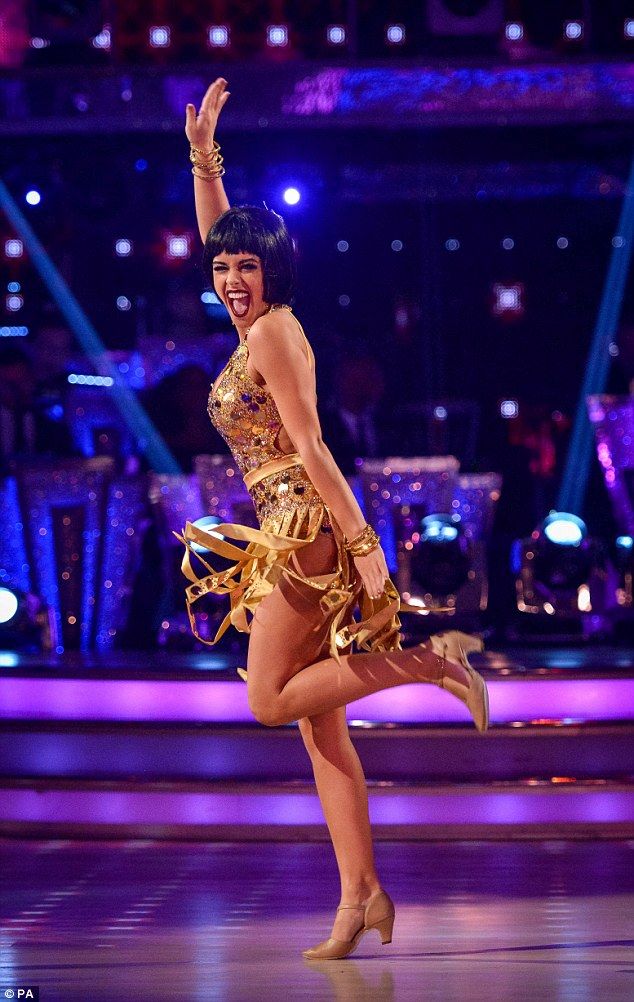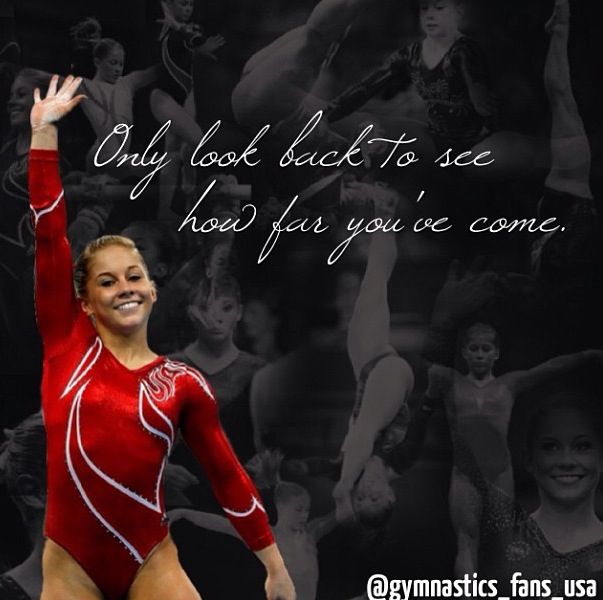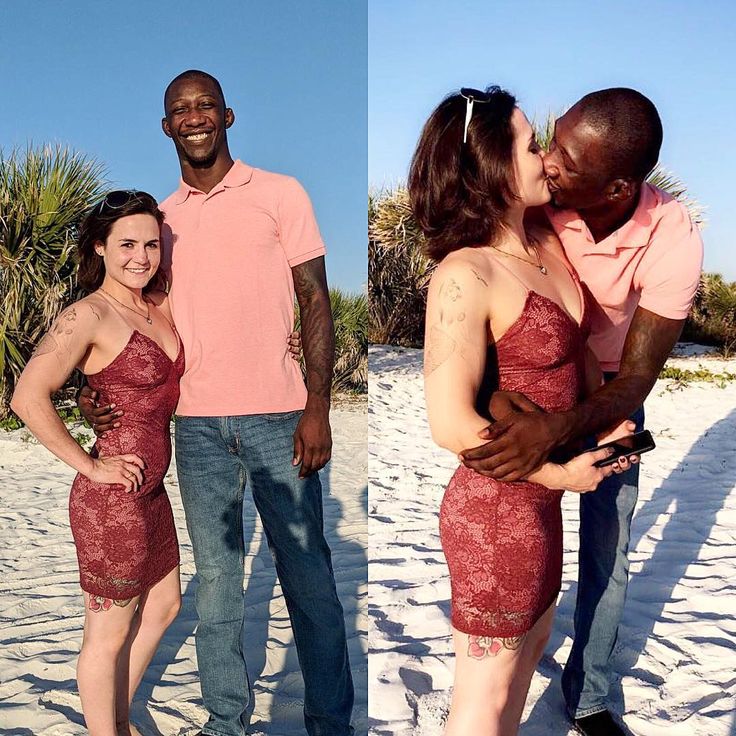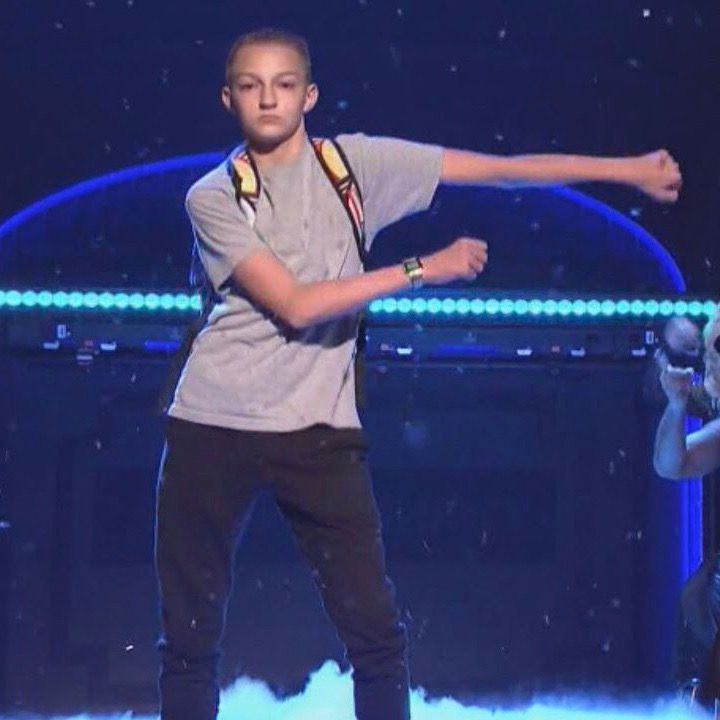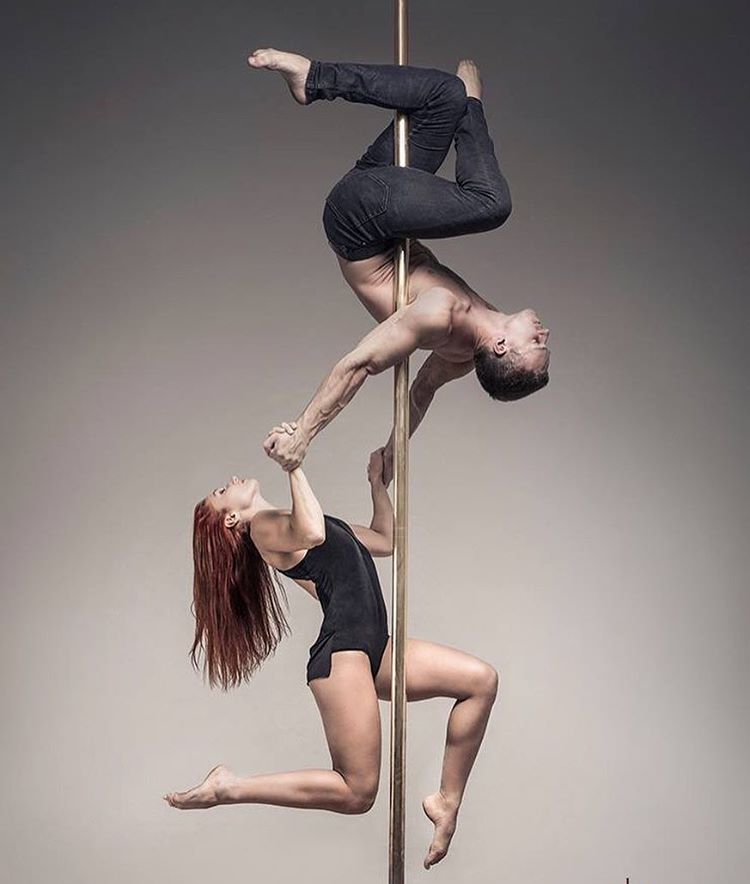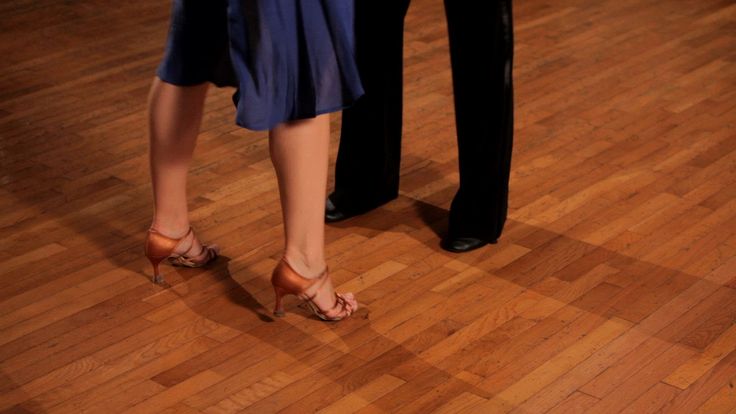How to dance the mambo
How to Dance Mambo: Beginners Guide to Mambo
Do you want to know how to dance Mambo?
Mambo Dance by clara (CC BY-SA)You may have heard of the Mambo from many tenets of popular culture. West Side Story majorly popularized the dance after the widely-viewed movie was released in 1961.
The Mambo became a hit after the scene in West Side Story in which the two rival gangs face off in a dance competition.
You may have also heard the song Mambo no. 5 by Lou Bega, which charted at number 1 in many different countries.
Table of Contents
1
How to Dance Mambo
Mambo is a Latin dance of Cuba that originated in the 1940s when the music genre of the same name became popular throughout Latin America.
Lou Bega by alexconst (CC BY)The original ballroom dance which emerged in Cuba and Mexico was related to the dance literally named the danzón, albeit a faster and less rigid alternation.
In the United States, it replaced the rumba as the most fashionable Latin dance. After the popularisation of many different Latin dances, a new type of mambo dance was popularized in New York.
History of Mambo
In the mid-1940s, a bandleader devised a dance for a new form of music known as mambo music, taking its name from the 1938 song ‘Mambo 1980.’
Pérez Prado by culturacdmx (CC BY-SA)It was a syncopated and less rigid form of the danzón which gave dancer license to express themselves.
Havana native Pérez Prado brought the dance from Cuba to Mexico and it became a Latin staple.
The original mambo dance was characterized by freedom of expression on the dancefloor along with a complex combination of footsteps.
The Mambo dance originated with Pérez Prado and was popular in the 1940s and ’50s in Cuba, Mexico, and New York.
The Original Mambo Dance
You’ll find that the original Mambo dance is completely different from the modern version known as the Mambo in New York. The new form is also known as salsa “on 2”.
The original mambo dance contains no basic or breaking steps at all, but a complex combination of footings.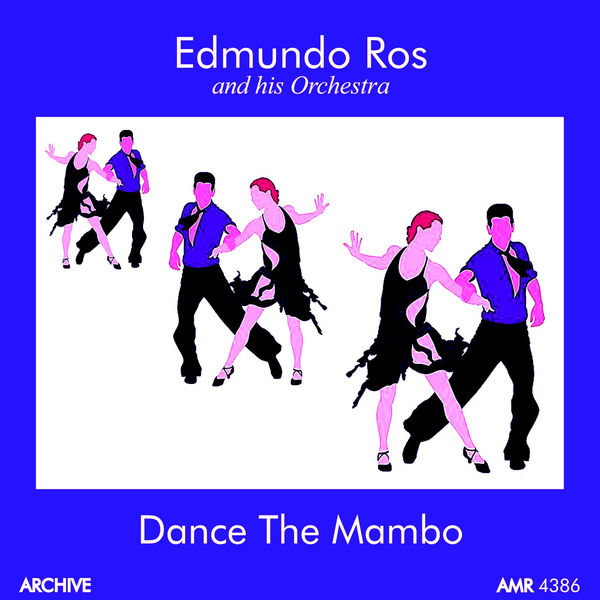
In the 1940s, Puerto Rican dancer Pedro Aguilar (known as ‘Cuban Pete’) became known as the greatest Mambo dancer of all time.
Mambo live show by culturacdmx (CC BY-SA)He popularised the dance in New York City, with regular visits to the Palladium with his wife.
The modern Mambo dance from New York was popularized in the late 1960s into the 1970s by George Vascones, president of a dance group known as the Latin Symbolics.
This is the version in which the footsteps are less complicated and easier to follow.
George Vascones continued the Mambo dance tradition which started two decades earlier during the Palladium era which was huge around the time of Cuban Pete.
How to Dance Mambo
The video below explains how to the Mambo dance concentrating on the forward and back step:
Forward Basic (Forward Break)
Lead – the lead starts by putting the left foot forward (as in most dances) and shifting the weight onto it.
The right foot stays in place, the leg-lengthening. Then the lead rocks back onto the right foot, waiting until full weight has been transferred to it before sliding the left foot back next to the right.
The dancer then transfers the weight back to the left foot in preparation for stepping over on the right, taking weight on that foot, and dragging the leftover to close the step.
All of these steps are done with the feet staying flat on the ground.
In fact, often in dance studios, teachers will have the students dance with paper towels under their feet, sliding around the floor in the patterns.
Follow – To a great extent, the partner mirrors the steps of the lead. Starting with the weight on the left foot, the right slides forward, and the full weight of the body comes onto it in a rocking forward motion.
Stepping back, the weight shift results in a step to the left, the right foot coming to close at the end of the basic next to the left.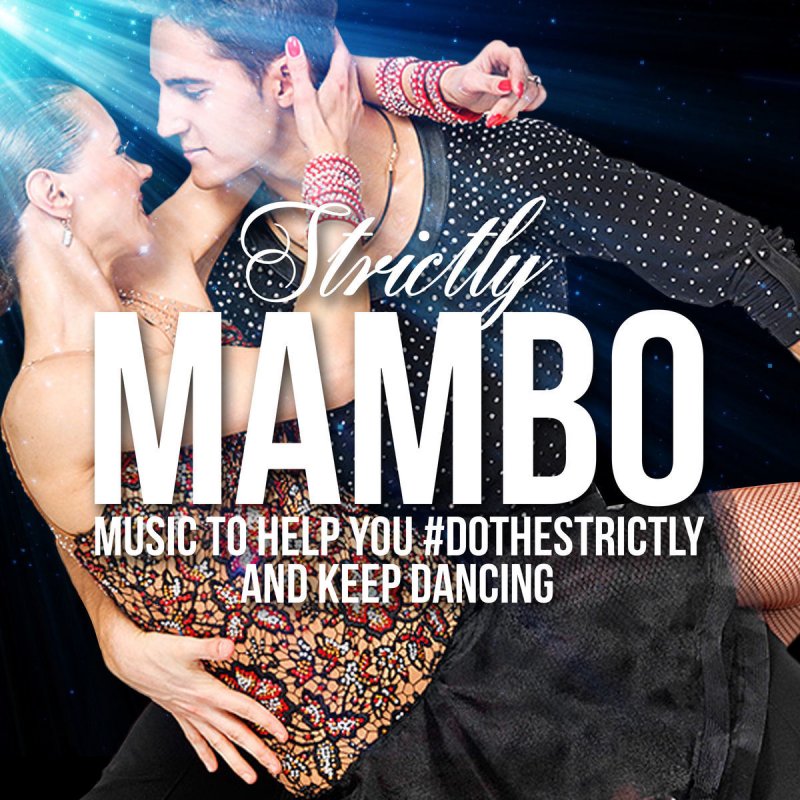 Weight shifts onto the right then in preparation for the Back Basic.
Weight shifts onto the right then in preparation for the Back Basic.
Backward Basic (Rock Back)
Lead – The lead puts the right foot back, bending the left knee as the weight comes to rest on that foot. The left foot shouldn’t move. After the weight has rocked back onto it, push forward again onto the left leg.
Step forward and close, changing weight onto the right leg, in preparation for going back into the forward basic (or whatever other move is planned).
Follow – Extending the left foot back, the right knee bends and there is a rocking motion back as the body shifts onto the left foot.
The right should never leave the floor, however, the shift is subtle.
Rocking forward, the weight comes back onto the right and as the left comes back to close the dancer has completed the most basic of mambo steps.
Express Yourself
While the basic step is fun, the true magic of the Mambo comes in the fast and intricate permutations created by the dancers as they move together.
The best thing is that since this is a Latin dance, many of the same moves that applied in Salsa, Rumba, and other Latin dances work very well.
The Cross-Body Lead
Especially useful in tight situations, the cross-body lead is a tool used by the lead to guide the follow into a new place on the dance floor, facing directly opposite of the original position.
In other words, if the lead starts facing a wall, at the end of the move the follow will be facing the wall.
Affectionately known by some dance instructors as “Drag-Her-Around”
The cross-body lead is three steps that shift weight on the same feet as the basic step, with the variation of a 180-degree pivot turn being performed after the first weight shift.
The follow simply takes the steps forward and across the lead’s left side, performing the same kind of 180-degree turn but in the form of two 90 degree turns in the second and closing step.
The Crossover Break
A stylistic variation, the crossover break occurs when both the lead and follow keep their hands connected but let their feet turn one-quarter turn away from each other, moving back into what is called (in ballroom) “fifth position. ”
”
This should not be confused with the fifth position in ballet; the foot is behind and slightly to the side of the other.
However, the most important is that weight should be entirely shifted onto the rear foot. A common error is to simply “tap” the foot, which dilutes the full effect of the break.
These are only two examples of simple moves, and they can be combined to create a move called the “curved-forward basic.”
Ideally, though, mambo dance steps should be learned first in a ballroom dance studio and then out in the clubs. The dance is alive there for all to learn and enjoy.
Famous Mambo Songs
Once you’ve got your salsa steps down to a T, it’s time to familiarize yourself with the most famous Mambo songs.
See these world-famous Mambo songs below:
- Cherry Pink and Apple Blossom White – Perez Prado
- Bonito Y Sabroso – Benny Moré
- Papa Loves Mambo – Perry Como
- Hong Kong Mambo – Tito Puente
- Mambo no.
 5 – Lou Bega
5 – Lou Bega
Now you shouldn’t have any trouble impressing your friends and family with these Mambo rhythms.
How to Dance Mambo: Conclusion
The Mambo is historically important to the cultures of Cuba and Mexico. New York was the major proponent without which it wouldn’t still exist.
Thanks to the talents of Cuban Pete and the many schools that brought innovation to the dance, it’s still one of the most exciting dances to come out of the Caribbean.
Hopefully, with this guide, you can be a Mambo Master in no time!
📌 Like this article? Pin it…
Missing something? Got tips, tricks & advice we can learn from?
💬 Leave a nice comment or let’s start a conversation below!
“Dear friend! Some links in this post contain affiliate links. Meaning, if you click through and make a purchase, book a hostel or sign up for a tour, I may earn a small commission at no additional cost to you. Your support means a lot and helps me to keep traveling and maintaining the quality of this site for you.”
Your support means a lot and helps me to keep traveling and maintaining the quality of this site for you.”
Mambo Tutorial - For Beginners
Mambo is one of my favorite dances – It’s spicy, rhythmical, and full of energy! Because of its high energy and rhythmical movements, it tends to be a fan favorite at dance competitions and dance television shows. Although this dance is tons of fun to do, it can be quite a challenge to get down. It requires a good musical ear, controlled body movements, isolations, and lots of energy. This post will be a great introduction to this fun dance, and I hope it inspires you to learn more!
Below is a look into what I will be covering in this post:
· History and Characteristics
· Musical Information
· Dancing the Basic
· Dancing with a Partner
History and Characteristics
In the early 40’s, Mambo developed from the influence of Cuban Haitians and American Jazz music and was first introduced at a Havana nightclub by Perez Prado. Later in the ’40s, Mambo arrived in New York and quickly gained popularity. It was taught in dance studios, nightclubs, and resorts. Some of Mambo’s greatest influencers were musicians, Tito Puente, Tito Rodriquez, and Xavier Cugat, and dancer/choreographer, Eddie Torres. Mambo is an energetic dance that is characterized by its staccato movements, Cuban Motion, and rhythmical body action throughout!
Later in the ’40s, Mambo arrived in New York and quickly gained popularity. It was taught in dance studios, nightclubs, and resorts. Some of Mambo’s greatest influencers were musicians, Tito Puente, Tito Rodriquez, and Xavier Cugat, and dancer/choreographer, Eddie Torres. Mambo is an energetic dance that is characterized by its staccato movements, Cuban Motion, and rhythmical body action throughout!
Musical Information
Mambo music hit the scene in the 1930’s and became popular by the late 40’s with hits like Mambo # 5 by Perez Prado! Check it out here: https://youtu.be/HJlAb4VLs4k
Mambo is the fastest of the American Rhythm dances, ranging from 44-51 measures per minute (MPM). To give you something to compare that to, Cha Cha is 30 MPM! Because of its speed, we generally take three steps in four beats of music and follow a “quick quick slow” rhythm. What’s challenging for most is that we step on beats 2, 3, and 4 and hold on beat 1. Most people want to begin dancing on “1”, so often, people struggle to stay on time when first learning to dance Mambo.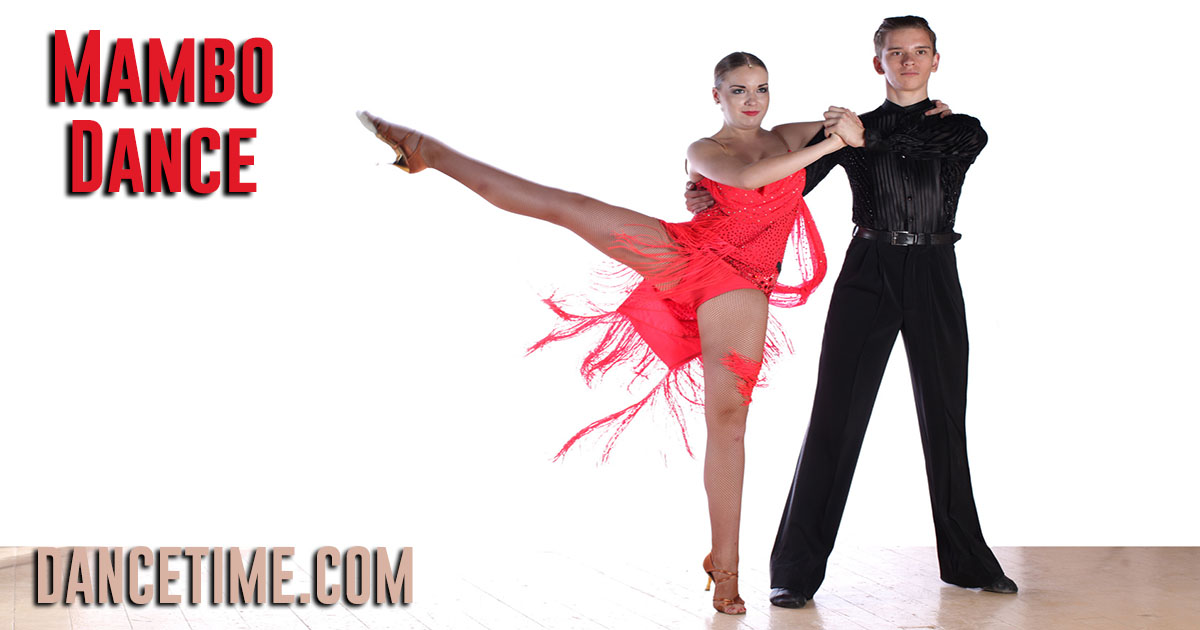
Check out this video to learn a quick tip to improve your timing: https://www.facebook.com/665881863801998/videos/1098519653832904
To learn more about the history of Mambo music, check out this article: https://www.masterclass.com/articles/mambo-music-guide#what-is-the-history-of-mambo-music
When dancing the Mambo, like the other rhythm dances, you will begin with your heels together with a slight turnout of the toes. In dance, we typically maintain contact with the floor – in other words, your feet slide from one step to the next. In Mambo, you will always step with the ball of your foot first while keeping your toes on the floor, then roll through your foot until it’s flat. Of course, when you become more advance, there are always exceptions to this rule, but for now, practice keeping your toes on the ground. Now, let’s get moving, beginning with a break step. A break is when you take a step in any direction and then return to your starting point, which will be in the opposite direction of the first step. This is also known as a rock step in other dance styles. In Mambo, we break forward, backward, and to the side throughout the dance.
This is also known as a rock step in other dance styles. In Mambo, we break forward, backward, and to the side throughout the dance.
Below I will break down the basic step for leaders and followers. Keep in mind that the steps are the exact same in the basic for both roles, but the leader will begin forward on “2” and the follower will begin by stepping back on “2”.
Leaders: Beginning with your left foot, step forward on count 2, replace your weight back to your right foot on count 3, then take a small step back with your left foot on count 4. Now, repeat to the back with your other foot – step back with the right foot on count 2, replace your weight to the left foot on count 3 and take a small step forward with your right foot on count 4. Don’t forget to hold on count 1. To simplify, you will dance a forward break on the first measure and dance a back break on the second measure.
Followers: Beginning with your right foot, step back on count 2, replace your weight forward to your left foot on count 3, then take a small forward step with your right foot on count 4.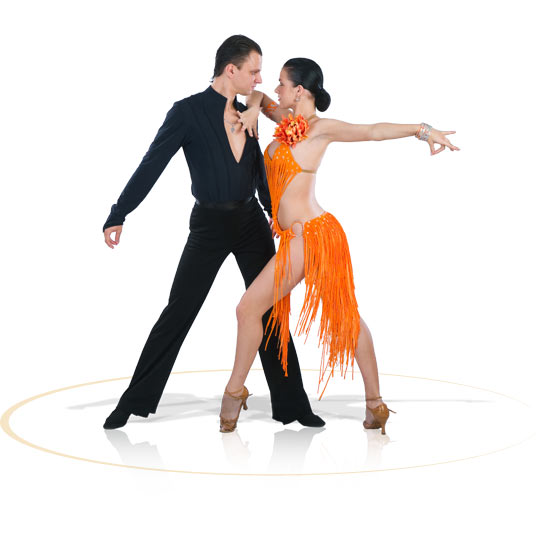 Now, repeat to the front with your other foot – step forward with the left foot on count 2, replace your weight back to the right foot on count 3 and take a small step back with your left foot on count 4. Remember to hold on count 1. To simplify, you will dance a back break on the first measure, and a forward break on the second measure.
Now, repeat to the front with your other foot – step forward with the left foot on count 2, replace your weight back to the right foot on count 3 and take a small step back with your left foot on count 4. Remember to hold on count 1. To simplify, you will dance a back break on the first measure, and a forward break on the second measure.
Check out this quick tip video on Footwork in the Basic Step for a helpful visual: https://www.facebook.com/665881863801998/videos/2909616159259719
As mentioned earlier, Mambo is characterized by its strong Cuban Motion. Cuban Motion is a body action that is created by bending then straightening one knee at a time each time you take a step along with dancing your upper body in opposition to your hips. To make your Mambo look like a dance rather than just steps, you will want to apply this technique to your basic. This technique does not come over night and will require lots and lots of practice. Here are a couple quick tip videos on this body action, but I do recommend going to your local studio and taking lessons to learn more!
This first video simply talks about the bending and straightening of the knees in Merengue: https://www. facebook.com/665881863801998/videos/541008169877878
facebook.com/665881863801998/videos/541008169877878
This next video goes more into detail about how the rib cage works in Mambo:
https://www.facebook.com/665881863801998/videos/272608694169596
Now that you have practiced the Basic step, let’s learn to dance with a partner! Below, I will break down how to get into a closed hold with your partner.
With your weight poised forward over the balls of your feet, begin by facing your partner about a foot apart and with the follower slightly offset to the right of the leader. If you are leading, place your right hand on your partner’s right shoulder blade, then lift your left arm until your elbows are even with your arm bent at a 90 degree angle and your hand curved towards your partner at about her eye level. If you are following, you will rest your left arm gently on top of your partner’s right arm and follow the curve of his arm to his shoulder. Place your right hand in your partner’s and lightly clasp.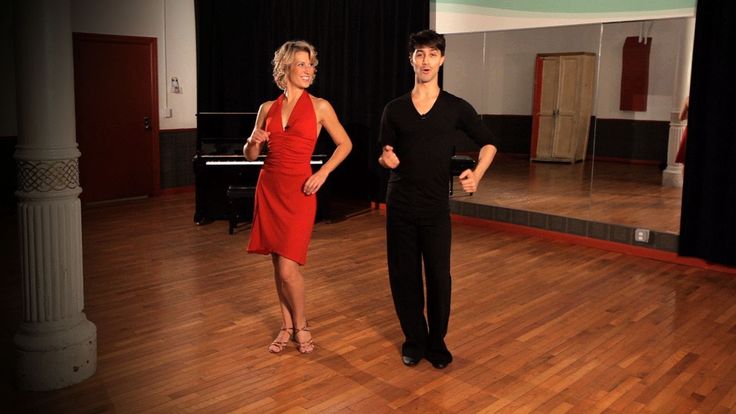 Make sure to keep your arms and elbows in front of your body with a slight forward poise to create a positive connection which will make it easier to lead and follow.
Make sure to keep your arms and elbows in front of your body with a slight forward poise to create a positive connection which will make it easier to lead and follow.
In this position, practice dancing the Basic Step, and when you feel comfortable, add music 😊 Here are some good Mambo songs to practice as well:
https://youtu.be/WncdzyQNQtM
https://youtu.be/4JVv43JS_TY
I hope you have enjoyed this post and are ready to learn more! If you have any questions, please don’t hesitate to ask.
Thank you for reading!
Mambo Dance - Mambo.
There are many dance styles, but none of them can compare with the mambo dance . This dance is distinguished by its special incendiary, energy, liveliness of movements, which are quite difficult to perform.
Mambo
Mambo (Spanish mambo ) is a musical style and dance of Cuba, which is also widespread in the Latin American countries of the Caribbean, as well as in those from the United States where people from these Latin American communities come from countries.
Origin
Mambo , like Rumba , Salsa , Cha-cha-cha , was born in Cuba. The word " mambo " comes from the name of the god of war, to whom a ritual dance was dedicated in Cuba in the distant past.
The first real mambo dance was very simple. But, over time, famous dancers managed to make the dance really unique.
They retained the basic movements of the legs and hips, but also added some elements that they could not add to any of the other existing dances. This is how the dance, unique in its beauty and complexity, turned out.
Initially, mambo was performed only to fast rhythms of music, but over time, when some very famous and nowadays slow mambo compositions were written, dancers found another way to express this dance. The current form of Mambo was born in the 40s as a result of the fusion of Afro-Cuban rhythms and jazz, whose fathers were Odilio Urfe and Arsenio Rodriguez .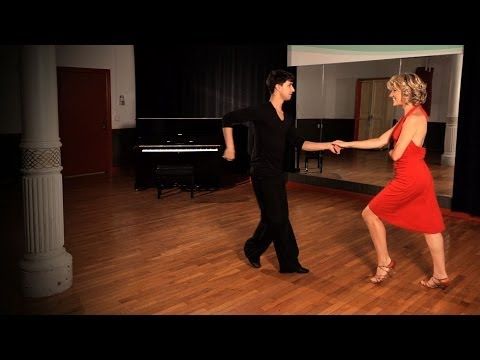
The famous Cuban composer Damaso Pérez Prado (1916-1989) really liked the new rhythm. Perez Prado increased the number of wind instruments in his orchestra, and a new sound was obtained, and immediately after his birth, he began to win the hearts of thousands of people around the world.
Damaso Perez Prado promoted mambo in the United States of America. After graduation at 1944 year by the American record company Victor of a collection of his melodies called "Mambo", the success of the new rhythms reached the United States. And the Cuban composer himself, after a resounding success, began to be called the "King of Mambo".
Contributed to the development of mambo and Javier Cugat, a musician born in Spain and raised in Cuba. His musical works combined Afro-Cuban rhythms and flamenco melodic turns.
Features
Mambo's music is charming and varied, with a distinct rhythm. Initially, it was performed as Rumba with a slowdown at the end of the tempo, i.e. on 4 beats in 4/4 rhythm. Some musicians used the 2/4 rhythm, slowing down the 2nd and 4th beats respectively. The emphasis of the main step on the 2nd beat is observed in ballroom dancing.
Initially, it was performed as Rumba with a slowdown at the end of the tempo, i.e. on 4 beats in 4/4 rhythm. Some musicians used the 2/4 rhythm, slowing down the 2nd and 4th beats respectively. The emphasis of the main step on the 2nd beat is observed in ballroom dancing.
Professionals note the dissimilarity of most mambo movements with dance steps from other dances. All the metamorphoses that this dance has undergone in its history have made it truly unique. The uniqueness of the dance, charming music, mesmerizing beauty and temperament of the movements made mambo one of the most popular dances not only in Latin American choreography clubs, but also at dance parties, discos and parties.
Dance clubs and schools
You're viewing: do_dance_mambo.html
NewOldUsefulUseless
Page 1 of 1
Write a review
Encyclopedia of dance: Mambo
The madness of human passions pervades the temperamental and sensual mambo.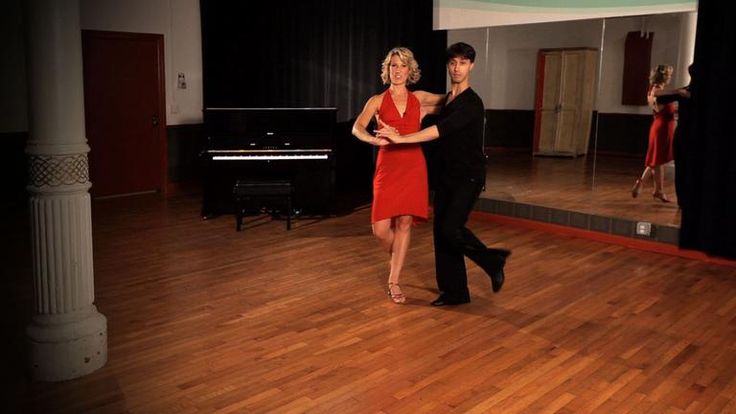 Cuba can rightfully be proud of its melodies and rhythms. Rumba and cha-cha-cha, salsa and mambo celebrate this charming, sunny island.
Cuba can rightfully be proud of its melodies and rhythms. Rumba and cha-cha-cha, salsa and mambo celebrate this charming, sunny island.
The word "mambo" comes from the name of the god of war. From time immemorial, the Cubans dedicated a ritual dance to him, in order to earn favor and secure patronage. The mambo dance has much in common with rumba and cha-cha-cha (at first, the famous cha-cha-cha was even called syncopated mambo), but it is distinguished by great temperament, freedom in expressing feelings and emotions, and luxurious musical accompaniment.
Incendiary mambo rhythms are widely used in cinematography. This dance is both a means of seduction and a way to express your feelings. Some of the most famous motion pictures featuring dance are Mambo, starring Antonio Banderas and Armand Assante, and the more recent film Dirty Dancing, starring Patrick Swezi.
The history of the origin of the dance
The modern form of mambo was formed in the middle of the 20th century as a result of the combination of jazz and Afro-Cuban rhythms.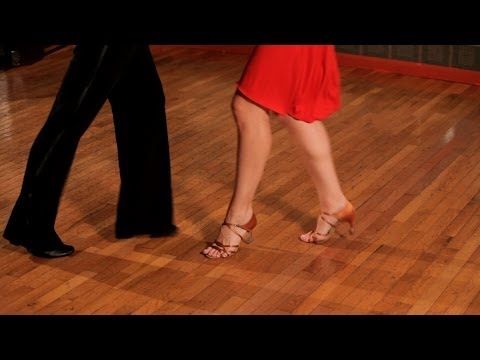 The founders of the new style were Odilio Urfe and the blind drummer Arsenio Rodriguez, who is also considered the author of salsa melodies and rhythms. A new musical style was introduced on stage in 1938 by Orestes López with the Orquesta Arcanos orchestra. And he called it "mambo".
The founders of the new style were Odilio Urfe and the blind drummer Arsenio Rodriguez, who is also considered the author of salsa melodies and rhythms. A new musical style was introduced on stage in 1938 by Orestes López with the Orquesta Arcanos orchestra. And he called it "mambo".
The history of the dance begins later, when the dancers noticed the melody, mastered new rhythms and created figures suitable for them. Secular society reacted negatively to the new dances, calling them dirty. To promote mambo, Orestes Lopez began to introduce jazz elements into the music.
Cuban composer Damaso Pérez Prado promoted mambo in the United States of America. After the release in 1944 by the American record company Victor of a collection of his melodies called "Mambo", the success of the new rhythms reached the United States. And the Cuban composer himself, after a resounding success, began to be called the "King of Mambo."
Contributed to the development of mambo and Javier Cugat, a musician born in Spain and raised in Cuba.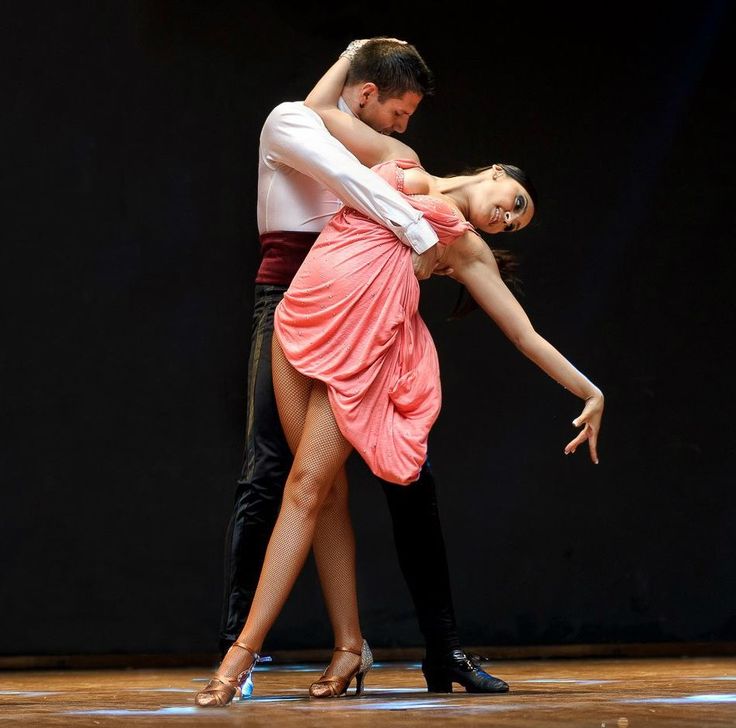 His musical works combined Afro-Cuban rhythms and flamenco melodic turns.
His musical works combined Afro-Cuban rhythms and flamenco melodic turns.
What is mambo?
This dance belongs to the category of "dirty dances". After all, the basis of his movements are wave-like, circular, swaying movements of the hips. The dance is permeated with sensuality and eroticism, and the choreography is based on jazz elements.
Energetic mambo attracts beginners with the simplicity of basic movements, and incendiary music will allow you to enjoy dancing from the very first lessons. Mambo can be danced in pairs, in a group and alone. The music is distinguished by a clear rhythmic pattern, which makes it possible even for a beginner to easily coordinate movements with musical accompaniment.
Mambo is played in slow motion at the end of the bar, i.e. to the count of 4 with time signature 4/4. In ballroom dancing, the emphasis is on the second beat. Cubans can slow down on any shot.
Features of mambo
Despite the fact that the basic movements of mambo are relatively simple, professional dancers have managed to embellish this dance with complex elements that are not used in any other dance.
